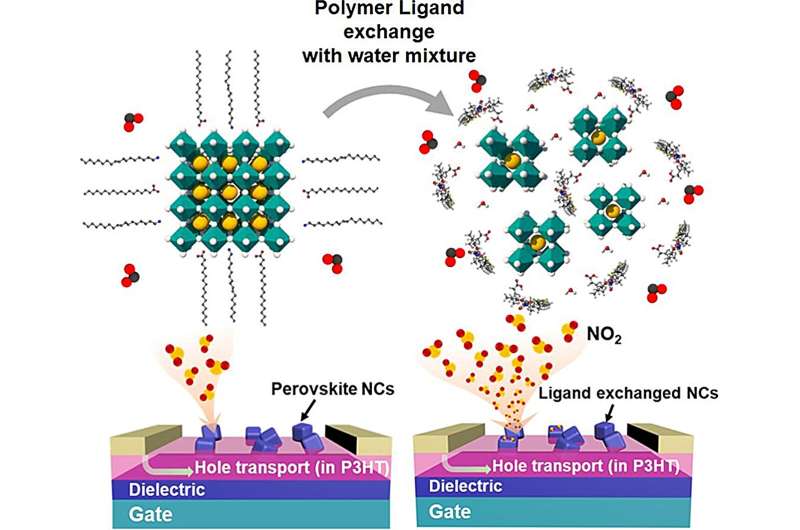This article has been reviewed according to Science X's editorial process and policies. Editors have highlighted the following attributes while ensuring the content's credibility:
fact-checked
peer-reviewed publication
proofread
Pushing the limits of gas sensing technology

The world has become increasingly industrialized over the past few centuries, bringing all sorts of technology and conveniences to the masses. However, workers in industrial environments are often at risk of exposure to many dangerous gases, such as nitrogen dioxide (NO2). Inhaling this gas can lead to serious respiratory diseases like asthma and bronchitis, and severely compromise the health of industrial workers. Constant monitoring of NO2 levels is thus needed to ensure a safe workplace.
To help with this, many types of selective gas sensors have been developed using different organic and inorganic materials. Some of them, such as gas chromatography sensors or electrochemical gas sensors, are highly sophisticated, yet expensive and bulky. On the other hand, resistive and capacitive sensors based on semiconductors seem to be a promising alternative, with organic semiconductor (OSC) gas sensors representing a low-cost and flexible option.
Nonetheless, these gas sensors still face some performance issues, including low sensitivity and poor stability for sensor applications.
Against this backdrop, a team of researchers from Korea, led by Professor Yeong Don Park from the Department of Energy and Chemical Engineering at Incheon National University, set out to find innovative strategies to take OSC NO2 sensor technology to the next level.
Their study was published in Chemical Engineering Journal.
To this end, the team proposed a hybrid organic–inorganic gas sensor design based on the combination of a conductive organic polymer and perovskite nanocrystals. They incorporated a CsPbBr3 perovskite into a conductive polymer matrix to enhance its gas sensing performance while maintaining sensing speed.
They further modified the surface of the perovskite nanocrystals with zwitterionic polymer ligands. Once hydrated, these ligands greatly improved the affinity of the sensor for NO2 gas molecules, thus resulting in improved absorption.
Further experiments revealed that the proposed design outperformed conventional sensors in terms of chemical sensitivity to NO2. Moreover, their system was highly resistant to oxidation, thanks to the protective action of the perovskite nanocrystals. Thus, it could withstand storage in ambient conditions for several weeks, showcasing impressive durability and higher potential for long-term installation.
"Our findings suggest a new approach for the development and design of gas sensors based on various material composites to achieve both superior sensitivity and selectivity," highlights Prof. Park, while discussing the results.
Given that OSCs can be designed to be flexible, lightweight, and relatively inexpensive when mass-produced, they could pave the way to the widespread adoption of gas sensors in various contexts.
"Beyond specific settings like industrial sites, OSC gas sensors could enable individuals to readily access information about air pollution levels through commonplace devices like smartwatches," explains Prof. Park. He further adds, "Moreover, these sensors have the potential to advance diagnostic technology by facilitating the early detection of medical conditions. Therefore, it has potential not only for industrial safety but also in the realms of food safety, chemical substance monitoring, and medical diagnosis."
More information: Duho Jang et al, Polymeric interfacial engineering approach to perovskite-functionalized organic transistor-type gas sensors, Chemical Engineering Journal (2023). DOI: 10.1016/j.cej.2023.145482
Journal information: Chemical Engineering Journal
Provided by Incheon National University





















